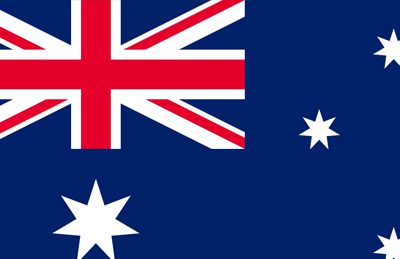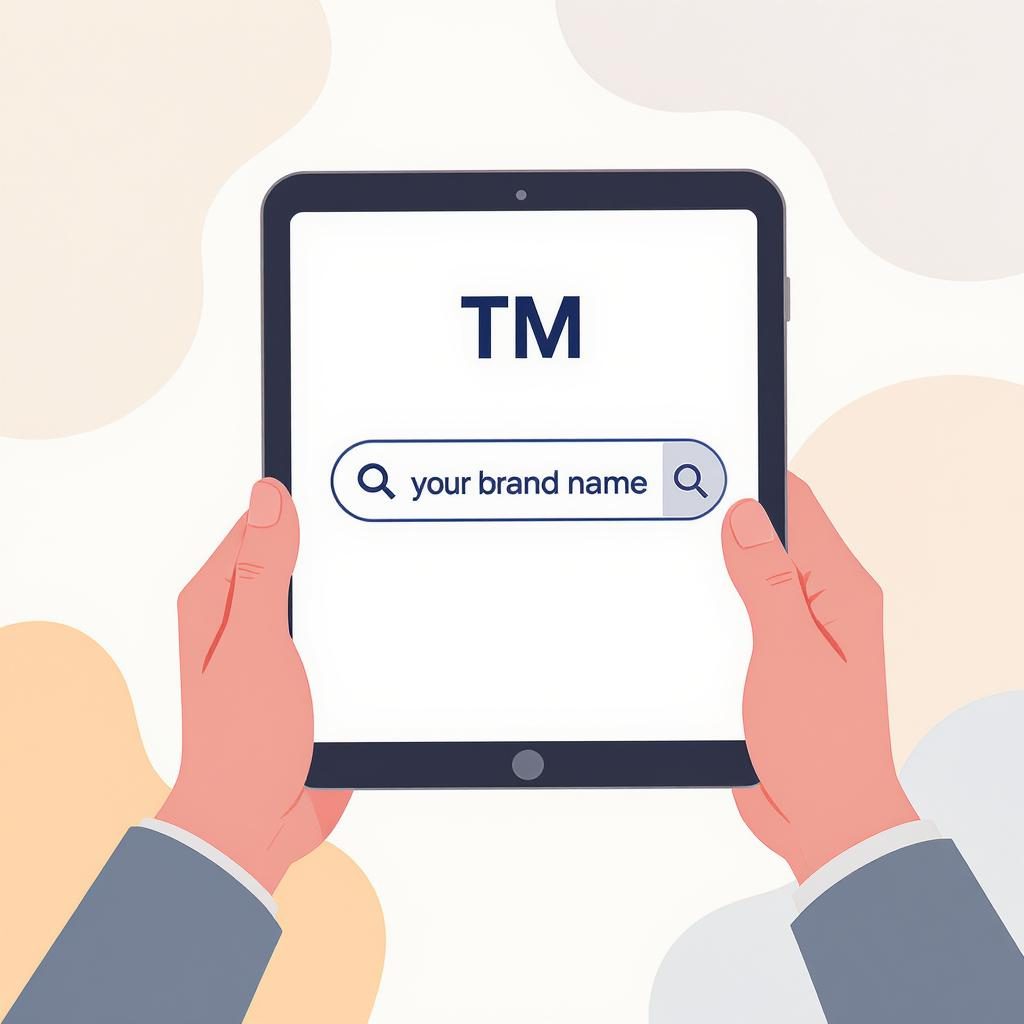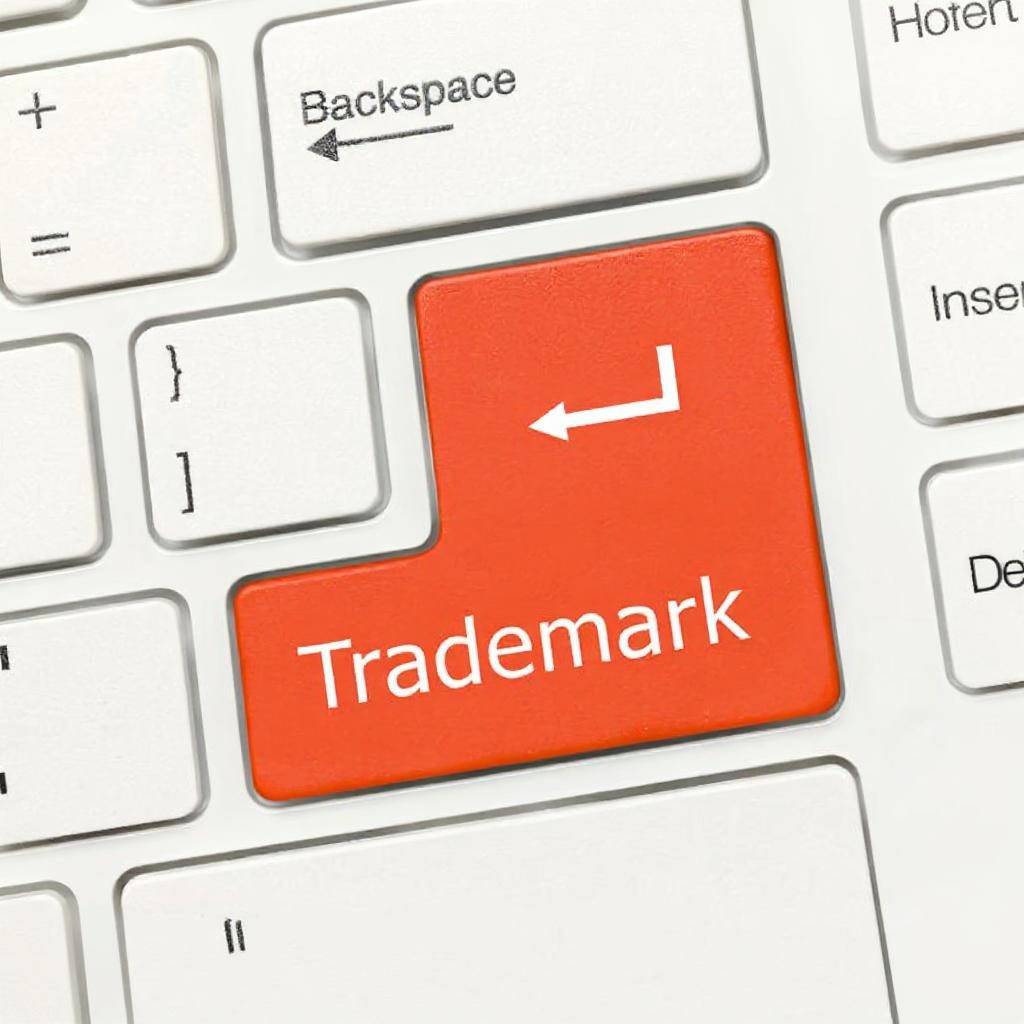
Brand Registration Guide in 2025
In the fast-evolving world of business and intellectual property, timing is everything. Whether you’re launching a startup, building an e-commerce empire, or growing a legacy brand, 2025 presents a rare


Looking to register your trademark in Australia? At Trademark Angel, we offer affordable and dependable services for Trademark Registration Australia. Our experienced team handles all types of applications to ensure your brand is legally protected. While the process is similar to Canada’s, there are key differences you need to understand. We’re here to guide you through each step — from choosing the right class to understanding how and when to use the trademark sign (™ or ®) for your brand in Australia.
At Trademark Focus, we have a designated Australian practitioner who can handle all your legal needs for Trademark Registration in Australia — from filing and examination to opposition and litigation. We’re also equipped to assist with any additional legal matters related to protecting your brand in Australia.
Looking to expand your protection? We can also register your trademark in New Zealand, and the good news is our professional fees are the same for both Australia and New Zealand.
Covers filing your application and reporting the progress all the way to registration. 2 classes included. This is our entry-level package.
Covers full trademark registration, including reporting and responding to non-substantive examiner’s objections and free re-filing.
Covers all aspects of trademark registration, including responding to all examiner’s objections and free re-filing. More free extras.
Prices depend on the country. Please check individual country page for exact prices for each package.
Our “ALL IN” package covers government fees, responses to examiner objections (office actions), opposition proceedings, free re-filing if needed, and other additional services to ensure a hassle-free Trademark Registration Australia experience.
If an office action is issued during your Trademark Registration Australia process, we’ll promptly notify you and provide an estimate for our response based on hourly rates. Whenever possible, we aim to offer a flat fee to keep things straightforward.
If your budget is limited and our free Australian trademark search reveals no obstacles to registration, this entry-level package is an ideal starting point for Trademark Registration Australia.
Includes all features of the “SAIL THROUGH” package, plus regular progress reports, handling and responding to non-substantive (procedural) office actions, and free re-filing if your trademark is refused by the Trademarks Office.
Free re-filing is included under our “SAIL THROUGH” package terms — while you will be responsible for government fees, we waive all professional fees. For more information, please see our FAQ section on re-filing.
The maximum number of classes included is 2 for Trademark Registration Australia. Each additional class incurs a professional fee of $100.
This package covers government fees, responses to substantive office actions, and opposition proceedings for Trademark Registration Australia.
Our most popular package offers peace of mind and predictable budgeting for your Trademark Registration Australia needs.
We handle all non-substantive office actions at no extra charge. Plus, if your trademark is refused during the Trademark Registration Australia process, you’ll have the option to file a different trademark — and we’ll waive our professional fees for the re-filing!
If your trademark is refused,
We’ll file another – fee excused.
This package includes everything offered in the “ALL IN” package, plus reporting and responding to substantive office actions. If your trademark is refused by the Trademarks Office during the Trademark Registration Australia process, we’ll also provide free re-filing under the same terms.
Free re-filing is offered under the terms of our “ALL IN” package — you’ll cover the government fees, while we waive our professional fees. For full details, please visit our FAQ section on re-filing.
This package includes up to 2 classes for your Trademark Registration Australia application. Each additional class is available for a professional fee of $100.
You’ll receive unlimited consultations with our trademark specialists throughout your Trademark Registration Australia process — a service valued at an average of $250.
This package covers government fees, opposition proceedings, and cancellation proceedings related to your Trademark Registration Australia application.
If you prefer to pay one upfront fee and avoid unexpected charges later, this package is ideal. It’s especially recommended if our trademark search for your Trademark Registration Australia application revealed potential obstacles that may need to be addressed.
We’ll handle all office actions — both substantive and non-substantive — at no extra cost. Plus, if your trademark is refused during the Trademark Registration Australia process, you’ll have the option to file a different trademark, and we’ll waive our professional fees for the re-filing. This package offers complete peace of mind and ensures your budget stays predictable. Learn more about this package and why it’s our top recommendation here.
If your trademark is refused,
We’ll file another – fee excused.
The Australian Government filing fee for Trademark Registration Australia is AUD $400 per class, which includes the option for customized entry of goods and services.
The New Zealand Government filing fee for trademark registration is NZD $100 per class.

Yes, we do offer trademark registration services in New Zealand. Our experienced team can handle the entire process for you, ensuring your trademark is properly registered and protected in New Zealand with the same dedication and expertise as we provide for Australian registrations.
To file a trademark application in Australia, you will need to provide the following information:
Applicant details: Full name and contact information of the individual or business applying for the trademark.
Trademark representation: A clear image or representation of the trademark (word, logo, or combination).
Goods and services: A detailed list of the goods or services the trademark will cover, classified according to the Nice Classification system.
Class selection: Identification of the relevant classes for your goods or services (usually up to two classes per application, with extra fees for additional classes).
Priority claim (if applicable): Details of any prior applications or registrations in other countries if you want to claim priority.
Agent details (if applicable): If you are using a trademark attorney or agent, their contact information is required.
A power of attorney (POA) is a legal document that authorizes a person or entity—usually a trademark attorney or agent—to act on your behalf in matters related to your trademark application.
In the context of trademark registration, you typically need to sign a power of attorney when you appoint a trademark agent or attorney to handle the filing, prosecution, and other legal procedures for your trademark. This allows the agent to communicate with the trademark office, respond to official actions, and manage your application efficiently.
In Australia, submitting a signed power of attorney is usually required when an agent files the application for you, ensuring they have the authority to act on your behalf throughout the registration process.
Once you purchase a trademark package with Trademark Angel, our team immediately begins by conducting a comprehensive trademark search to identify any potential conflicts.
Next, we prepare and file your trademark application with IP Australia, ensuring all details are accurate and compliant. Throughout the process, we keep you informed with regular progress updates.
If any office actions or objections arise, we handle all communications with the trademark office on your behalf, working to resolve issues efficiently.
Once your trademark is approved, we assist with registration and provide ongoing support, including opposition monitoring and renewal reminders.
Our goal is to make the trademark registration process smooth and stress-free for you from start to finish.
In a trademark application, goods and services are categorized into different “classes” according to the Nice Classification system — an international standard used to organize products and services for trademark registration purposes.
Each class represents a specific category of goods or services. For example, Class 25 covers clothing and footwear, while Class 35 covers advertising and business services.
When applying for a trademark in Australia, you need to specify the classes that best describe the goods or services your trademark will cover. This helps define the scope of your trademark protection.
Choosing the correct classes is important because your trademark rights apply only within those classes. You can apply for multiple classes in one application, but each additional class usually involves extra fees.
Geographically descriptive trademarks can be challenging to register in Australia. Generally, marks that directly describe a geographic location or origin may be refused registration if they are considered merely descriptive and lack distinctiveness.
However, if the mark has acquired distinctiveness through extensive use or includes additional distinctive elements that differentiate it from a simple geographic description, it may be eligible for registration.
Each application is examined on a case-by-case basis by IP Australia, considering factors such as the likelihood of confusion and whether the mark misleads consumers about the origin of goods or services.
A “merely descriptive” trademark in Australia refers to a mark that directly describes the characteristics, qualities, purpose, or intended use of the goods or services it represents. Examples include terms like “Fast Delivery” for courier services or “Creamy” for dairy products.
Such marks are generally not registrable on their own because they lack distinctiveness—meaning they don’t clearly identify the source of the goods or services to consumers.
However, if a merely descriptive mark has acquired distinctiveness through extensive use in the market—showing consumers associate the mark specifically with one business—it may become eligible for registration.
Ultimately, each trademark application is examined individually by IP Australia, and the likelihood of registration depends on whether the mark functions as a source identifier rather than just describing the product or service.
Yes, surnames or full personal names can be registered as trademarks in Australia, but there are some important considerations.
Trademarks consisting solely of common surnames or personal names may face challenges during the registration process, especially if the name is not distinctive or is widely used in the relevant industry.
To increase the chances of registration, the name often needs to be used in a distinctive way—such as combined with a logo, stylized font, or other unique elements—that clearly identifies the source of the goods or services.
Each application is assessed individually by IP Australia, taking into account factors like distinctiveness and the likelihood of confusion with existing marks.
Filing a multi-class trademark application in Australia allows you to protect your brand across multiple categories of goods and services with a single application. This can be more cost-effective and efficient compared to filing separate applications for each class.
Some benefits include:
Broader protection: Your trademark covers all relevant areas where your products or services operate.
Simplified management: You deal with one application process and one renewal date, making it easier to maintain your trademark portfolio.
Cost savings: While each additional class incurs government and professional fees, it’s often cheaper than filing separate applications.
Strategic flexibility: You can protect future business expansions by including classes you plan to enter.
Yes, it is possible to split an Australian trademark application into separate applications. This process is known as a “division.”
You might choose to divide an application if part of it is delayed — for example, if certain goods or services face an objection while the rest are ready to proceed. By dividing the application, the uncontested goods or services can move forward to registration while you address issues with the remaining parts.
Divided applications keep the same filing date as the original, which is important for preserving your rights. Note that government fees apply for each new divided application created.
Australia uses the Nice Classification system, an internationally recognised system for classifying goods and services in trademark applications. This system divides goods and services into 45 different classes — 34 for goods and 11 for services — with each class covering a specific category of products or services.
When filing a trademark in Australia, applicants must select the appropriate class or classes that accurately describe the goods or services their trademark will cover. The chosen classes define the scope of protection the trademark will receive.
What makes Australia a little different is that while it follows the same Nice Classification as many other countries, it allows for more flexibility in describing the goods and services within each class. Applicants can provide customised descriptions instead of only using pre-approved wording, giving businesses more control over how their trademark protection is framed.However, it’s important to choose your classes and wording carefully, as this determines the legal coverage of your trademark in Australia.
Registering your trademark in Australia offers several important benefits:
Exclusive rights: It grants you the exclusive right to use your trademark nationwide for the goods and services you register, preventing others from using a confusingly similar mark.
Legal protection: A registered trademark provides a strong legal basis to take action against infringement, counterfeiters, and unauthorized use.
Brand recognition: It helps establish and protect your brand identity, building consumer trust and loyalty.
Asset value: Your registered trademark becomes an intangible asset that can be licensed, sold, or used as collateral.
Enhanced business opportunities: Registration is often required to participate in online marketplaces (like Amazon Brand Registry) and to expand your business domestically and internationally.
Deterrent effect: Public registration discourages competitors from adopting similar marks, reducing the risk of disputes.
Yes, you can claim priority for your Australian trademark application based on an earlier filed application, as long as specific conditions are satisfied.
Under the Paris Convention, if you have filed a trademark application in another member country within the previous six months, you may claim the filing date of that earlier application as your priority date when submitting your application in Australia.
This priority claim means that your Australian application is treated as if it were filed on the same date as the earlier application, which helps you secure rights ahead of other applicants who file later.
To successfully claim priority, you must provide details of the earlier application, such as the filing date and country of filing, and submit certified copies if requested by IP Australia.
When deciding whether to file a word mark or a logo trademark in Australia, it depends on how you want to protect your brand.
Word Mark: This protects the text or brand name itself, regardless of font, style, or color. Filing a word mark gives you broad protection over the wording, allowing you to use it in any style or design in the future.
Logo (Device Mark): This protects the specific visual design, including fonts, colors, graphics, or stylization. It safeguards the exact look of your logo but doesn’t provide exclusive rights to the words alone.
Many businesses choose to file both to ensure comprehensive protection—securing the brand name as well as its unique visual identity.
Ultimately, the best choice depends on your branding strategy and how you use your mark in commerce. Consulting with a trademark professional can help you decide the most suitable approach for your Trademark Registration Australia.
No, incorporating your business does not automatically protect your brand name or logo as a trademark.
Business incorporation registers your company name with the relevant government authority but does not grant exclusive rights to use that name or logo in commerce. Without trademark registration, others may still use a similar or identical mark for their goods or services, which could cause confusion or harm to your brand.
Registering a trademark provides you with legal protection and exclusive rights to use your brand in connection with the registered goods or services across Australia. It is a crucial step to safeguard your brand identity beyond simply incorporating your business.
The trademark opposition process in Australia typically takes between 6 to 12 months, depending on the complexity of the case and the responsiveness of the parties involved.
After a trademark application is accepted for registration, there is a 2-month opposition period during which third parties can file an opposition. If an opposition is filed, the process moves to formal proceedings before the Australian Trade Marks Office or the Administrative Appeals Tribunal.
The timeline can vary based on factors such as evidence gathering, submissions, negotiations, and whether the parties choose to settle or proceed to a full hearing.
While some oppositions are resolved quickly through settlement or withdrawal, others may extend longer if contested fully.
A Headstart trademark application in Australia is an optional application pathway offered by IP Australia that allows you to get an early review of your trademark by an examiner before you file the full application.
With a Headstart application:
Your trademark is examined within 5 working days of request.
You receive detailed feedback on potential issues or objections.
You can discuss concerns directly with the examiner before deciding whether to proceed with filing.
Your trademark does not appear publicly in the register until you choose to proceed with publication.
This process helps reduce the risk of refusal and can speed up the overall registration by addressing problems early.
In Australia, a registered trademark is valid for an initial period of 10 years from the filing date.
You can renew the registration indefinitely every 10 years by paying the applicable renewal fees.
It’s important to keep your trademark registration active by renewing on time to maintain your exclusive rights to use the trademark for your goods and services.
Understanding the differences between a company name, business name, domain name, and trademark is important for protecting and identifying your brand:
Company Name: This is the legal name under which your business is registered with the government (such as ASIC in Australia). It identifies your corporate entity but does not automatically provide rights to use the name commercially or prevent others from using similar names.
Business Name: This is the trading name your business uses in the marketplace, which may be different from your company name. Registering a business name allows you to operate under that name but does not grant exclusive rights to it as a brand.
Domain Name: This is the web address (URL) that customers use to find your website online. Registering a domain name gives you control over that specific web address but does not provide trademark protection or exclusive rights outside of the internet domain space.
Trademark: A trademark is a legal protection for a brand name, logo, slogan, or other identifiers used to distinguish your goods or services from others. Registering a trademark grants you exclusive rights to use the mark in connection with your registered classes of goods or services and helps prevent others from using confusingly similar marks.

In the fast-evolving world of business and intellectual property, timing is everything. Whether you’re launching a startup, building an e-commerce empire, or growing a legacy brand, 2025 presents a rare

In today’s competitive business environment, protecting your brand identity is not just a legal necessity—it’s a strategic move that can have long-lasting impacts on your business’s success. One of the

In today’s fast-paced and highly competitive business world, building a brand that stands out is no easy task. From your logo and business name to your product packaging and slogans,
Trademark Focus is a trusted trademark registration firm with more than 10 years of expertise. We specialize in handling trademark applications and protection services across Canada, the US, and internationally.
No.518, Jianshe Avenue, Jianghan District, Wuhan, Hubei Province